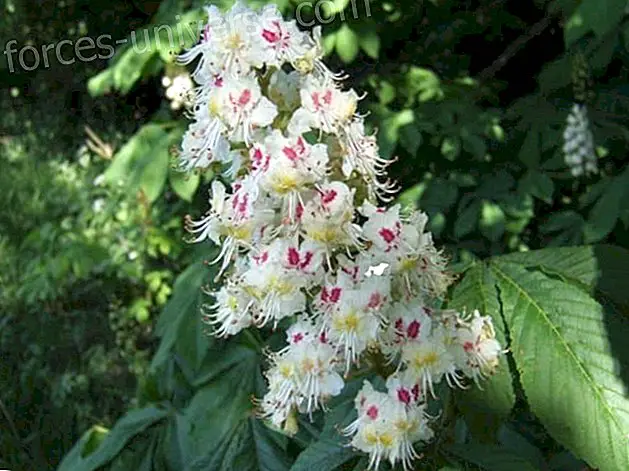Mindfulness: A practice of physical and mental awareness that can save our lives
- 2018

"Being aware means abandoning judgments for a while, setting aside our immediate goals for the future, and taking the present moment as it is and not as we would like it to be."
Mark williams
Currently, we live in a complicated era. The life we lead increasingly distances us from ourselves . That predisposes us to meet productivity and consumption needs that have little to do with our own needs.
This disconnection that occurs between our center of attention and our person, pushes us to float aimlessly in the sea of life.
In that way, we are easy prey for anxiety and stress, with all the complications that can involve in our lives.
We urgently need to find a practice that returns our focus to us.
Then, Mindfulness comes to our rescue. It helps us every day to become aware of ourselves. It allows us to devote a moment to stop thinking about our past and our future and focus on what we are living in this moment.
And that way, it manages to minimize the impact that the rhythm of daily life means to us.
It is perhaps one of the most popular practices that has taken over the past few years. Clearly, this is because of the growing need to regain control in our lives.
Either way, mindfulness is an excellent tool to deal with anxiety and fear, so present today. Let's go over your bases then.
Origins and Meaning of Mindfulness
The practice of Mindfulness is found in modern Vipassana meditation, and in the practice of sati.
Vipassana is one of the oldest meditations in India and means " seeing things as they are ." It corresponds to an internal vision towards the true nature of reality, and takes the practitioner to the first step towards liberation.
Sati, in turn, means approximately " awareness at all times of the present events ." About this it was said that it was a weapon against the false illusions of reality. It is also considered a power that helps us in obtaining nirvana if it is accompanied by samprajaña, that is, a clear understanding of whatever is happening.
Throughout history, mindfulness has been gaining popularity to become an independent practice of meditation.
The English philosopher Paul Williams says that mindfulness pointed the way to liberation in ancient Buddhism, being a constant observer of sensory experience. This practice allows you to develop the ability to attract attention to whatever is happening right now. This is accomplished by applying some simple exercises.
In this way, it allows us to strengthen self-knowledge and wisdom . In fact, Buddhist teachings offer detailed instructions on how to get to know the functioning of the mind. And so, thanks to this guide, understand the subjective nature of the experience.

Exercises to start in Mindfulness
Mindfulness gives you another perspective of what is happening, bringing your attention to what is happening inside of you.
If you are interested in introducing yourself to this millenary practice, there are some exercises you can do about it. In general, the first thing that is advised is to take note of your physical sensations in certain activities of the day. This is so that you begin to become aware of your sensations, because the way you have to assimilate the information you extract from the outside world is through the senses and their action in your body. First you perceive, then you reason.
Perform the Anapanasati exercise, or full awareness of the breath.
For this, put yourself in a comfortable position and focus on breathing for a minute.
Start by inhaling through your nose and exhaling slowly through your mouth, letting the air flow effortlessly through your body. Let go of those thoughts that come to meet you and concentrate carefully on your feelings. How does the air feel coming through your nostrils? How do you feel it when you cross your throat? Can you feel your lungs inflating with air?
To the extent that you get used to this practice, you can take it to all areas of the routine. How does the flexion and relaxation of the muscles feel when walking? And the contact with the fabric of your clothes? How does breakfast feel when you pass? Through your throat? How do you feel sadness, anger, sleep?
That way you can be in a state of mindfulness at all times in your daily life, what Buddhists call satipa h na .
Registered benefits of Mindfulness
Since the 70s, mindfulness has gained much empirical attention. Studies carried out in this regard show that the use of mindfulness programs relieves the symptoms of a variety of mental and physical disorders.
It is used both as a potential tool for managing weight problems, and for achieving optimal athletic performance. In addition, people suffering from insomnia have found a solution to their problem in this practice .

According to recent studies with neuroimaging, it significantly attenuates physical pain through single and multiple mechanisms. It also suggests that it has positive effects on the control of attention and emotions, and on body awareness.
It has been shown that emotional and behavioral changes carried out thanks to this practice cause functional and structural changes in the brain.
This activity also delays the progression of Alzheimer's .
This practice has been used in children, adolescents and adults to treat health problems related to anxiety disorders, mood swings, substance abuse, eating disorders, chronic pain, depression and the list goes on and on.
Many are the benefits that this meditation has to offer us. And it is necessary that we begin to take charge of the impact that the rhythm of life that we have is having on our health . Do not forget that the brain is a complex organ, and like any muscle, if overused, it ages faster .
In just two minutes a day you can do something about it.
It depends on you.
AUTHOR: Lucas, editor in the big family of hermandadblanca.org
SOURCES:
- https://en.wikipedia.org/wiki/Mindfulness#Buddhism_3
- https://www.psicoactiva.com/blog/terapia-de-atencion-plena-o-mindfulness/#Como_empezar_a_practicar_Mindfulness
- https://www.pocketmindfulness.com/6-mindfulness-exercises-you-can-try-today/






